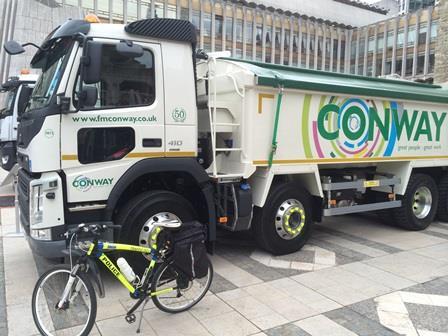
Last month’s meeting of the Construction Logistics and Cyclist Safety (Clocs) working group laid bare a shift in the emphasis around efforts to make roads safer for vulnerable users, while keeping the wheels of the road transport industry turning.
Held at London’s Guildlhall the event, the third meeting of Clocs since the initial report in May of last year followed by December’s launch of the Standard for construction logistics: managing work related road, was a who’s who of the construction logistics sector.
With around 70 organisations now in Clocs membership (and Clocs now existing as its own brand at clocs.org.uk and on Mace building sites) it was also clear that while Clocs was born out of Transport for London’s (TfL) reaction to a London problem, this is now a national response.
Attendes included Cemex, Conway, Lafarge Tarmac, Laing O’Rourke, Costain, Carillion, O’Donovan and Skanska.
Design for life
Construction vehicles that are “safer” for cyclists could be introduced immediately if operators are willing to accept the compromises such designs will bring, according to Scania.
Speaking at the Clocs event, Scania’s Phil Rootham, sales engineer – truck, and Steven McLachlen, market development manager – product, said the technology to improve visibility already existed.
“However, traditional design prioritises off-road use” they said, and, without a lead from operators, Scania would not produce a vehicle whose day-to-day performance is compromised straight off the production line.
“We could lower the vehicle cab with immediate [positive] effect and improve manoeuvrability with rear-steer axles. Removing the manual gearbox found in many construction vehicles would allow the driver to concentrate more on what’s going on out of the window,” they said. “Operators need to ask what the required ground clearance they need is and where on the vehicle, and how much time these vehicles spend off-road.”

The Scania team added that the solution to safer construction vehicle design can’t come from a single stakeholder adding that “we all have a responsibility to improve the current situation”.











